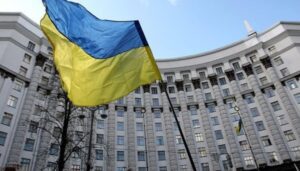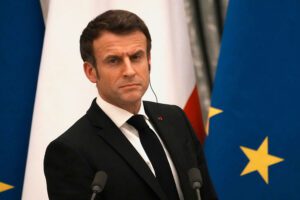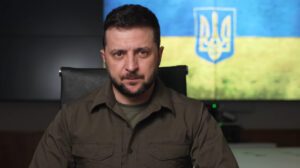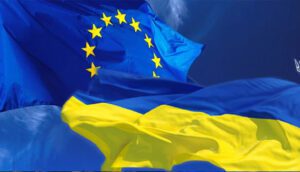
Uber, after receiving an approval from the city authorities, resumes work in Kyiv, the company’s press service said on Thursday.
At the same time, the company notes that it will not charge a commission for the service, so the full cost of trips will go to drivers.
“From today, Uber has resumed operations in Kyiv. To support the city’s immediate recovery, Uber will not charge any ride fees, meaning the full fare paid by passengers will go directly to local drivers. Uber will also donate 10,000 free rides to government employees and other critical infrastructure workers who provide the necessary assistance and services to the people of Kiev,” Anabel Diaz, regional manager of Uber in Europe, the Middle East and Africa, was quoted as saying.
Uber also continues to operate in other Ukrainian cities: Lviv, Ternopil, Ivano-Frankivsk, Vinnitsa, Chernivtsi, Khmelnitsky, Lutsk and Rivne.
In addition, the company added that in addition to resuming core operations, Uber continues to initiate social projects in cooperation with non-governmental organizations, volunteer centers and businesses to support Ukrainians.
Uber, in particular, offers promotional codes for free trips to blood donation centers for donors from DonorUA – they are available in all cities where the platform operates (in Kyiv, Lviv, Chernivtsi, Vinnitsa, Ivano-Frankivsk, Ternopil, Khmelnitsky, Rivne and Lutsk). In addition, Uber recently launched the Uber Connect&Van service in Lviv with a special promotional code for donating goods for internally displaced persons. The initiative is implemented in cooperation with the NGO “Volunteer Hundred Lions”.
In Ukraine and Poland, Uber has launched a special Uber Aid service that allows Ukrainians to travel to the borders for free.
The Uber Donate button in the app has already raised $3.5 million worldwide, according to the company.

The Cabinet of Ministers has established that combatants and civilians affected by Russian military aggression will be able to receive rehabilitation means, regardless of the establishment of disability
“The government has adopted a decision developed by the Ministry of Social Policy that systematically simplifies the receipt of auxiliary means of rehabilitation for people affected by the war of Russia against Ukraine, both military personnel of the Armed Forces of Ukraine and other military formations, and volunteers of territorial defense, and civilians,” the press release says. -services of the Ministry of Social Policy.
It is noted that the government’s decision: expands the list of persons who are provided with assistive means of rehabilitation, in particular, persons who were injured, contused, mutilated or ill during service, labor and other activities aimed at protecting the country during Russia’s military aggression against Ukraine, and as a result of living in areas of hostilities or in areas subject to bombing, airstrikes and other military attacks.
The decision also provides an opportunity for combatants and victims of Russian military aggression to receive auxiliary rehabilitation means, regardless of the establishment of disability, at the conclusion of military medical commissions or medical advisory commissions of healthcare institutions.
In addition, the solution provides for persons with disabilities who were in the area of hostilities and require rehabilitation funds, but have lost the documents necessary to obtain them, the opportunity to obtain them without the appropriate documents.
“Territorial offices of the Social Protection Fund for Persons with Disabilities will check the data on a person with a disability in the Centralized Data Bank on Disability Issues, and in the absence of information in the data bank, they will facilitate the receipt of the necessary documents at the place of residence or stay,” the message says.
Among other things, the Cabinet of Ministers: granted the right to early replacement of rehabilitation means to people who lived in the areas of hostilities during the military aggression of Russia, at their request on the basis of a certificate of registration of an internally displaced person; simplified the submission and consideration of documents for prosthetics and orthotics with products of increased functionality, manufactured using the latest technologies and technologies that are not available in Ukraine, or special products for sports for military personnel, volunteers of the territorial defense forces and other persons involved in the provision. defense of Ukraine; expanded the list of enterprises where people can order the necessary rehabilitation products, taking into account their needs and medical indications; granted combatants the right to receive financial assistance for the purchase of liners made of silicone or gel composition for the stumps of the upper and lower extremities in case of prosthetics and orthotics with products of increased functionality.

French President Emmanuel Macron said that at this stage he does not plan to visit Kyiv, as he does not believe that such a visit will bring concrete results.
“I think that in my case a trip to Kyiv would make sense only if it can bring real benefits to Ukrainians,” he explained his position to French journalists.
According to Macron, he is not going to visit the Ukrainian capital for the time being, because he does not want to “follow fashion’s lead.”
At the same time, the French president assured that he welcomes the recent visits to Kyiv by other European leaders, as “this shows European solidarity.”

President of Ukraine Volodymyr Zelensky, speaking to the Lithuanian parliamentarians, said that some countries of the European Union still, while the war is unfolding in Ukraine, cannot decide on the timing when they will limit the use of Russian energy resources.
“The European Union is discussing the sixth package of sanctions against Russia for a war not seen since the Second World War. And it is still unknown whether oil will be under sanctions. Even after seeing the massacres in Bucha and other cities. Even knowing about the deportation of people, even watching deliberate destruction of peaceful cities by Russian missiles and air bombs, some EU countries cannot decide when they will, at least in essence, limit the purchase of Russian energy resources,” Zelensky said.
According to him, hundreds of European companies and banks not only still have not refused to work on the Russian market, but also demonstrate frank disrespect in response to the demand to stop financing the Russian military machine through taxes.
“And all this is happening right now, when the blood is still fresh. What this shows is that if only the sixth sanctions package began to seriously discuss oil, it means that the world does not understand what kind of war Russia was preparing for. If there is still no clear certainty on Russian gas, therefore, there can be no certainty that Europe has a common will to stop Russian war crimes, to force Russia into peace.If there are big European companies and big European banks that, even in the midst of hostilities in Ukraine, do not consider it necessary exit the Russian market, this means that all other companies take it as a signal: wait a bit, and then you can work as usual, even if nothing, in essence, changes in the behavior of Russia,” the president added.

The construction of the innovation park LvivTech.City with co-working will continue, said the founder of the UFuture holding Vasily Khmelnitsky.
“They decided to complete the construction despite the war for two reasons. Firstly, to give employees the opportunity to earn money for their families. Every job saved today is support for the Ukrainian economy and Ukrainians on their native land. Secondly, we are creating a large coworking space right now, so that our IT specialists can stay and work in Ukraine,” the entrepreneur wrote on Facebook.
As reported, UFuture planned to launch the first stage of the LvivTech.City innovation park with an area of 18 thousand square meters. m in September 2021.
LvivTech.City will be located on the territory of the industrial zone of the former Lvovpribor plant. It is planned that the total area of the office part will be more than 40 thousand square meters. m. The park will be equipped with parking lots, a green area and areas for recreation. In addition, the project will be implemented in accordance with LEED green building standards.
According to the project, the area of the park is 5 hectares, the planned area of the residential part is 110 thousand square meters. m.
Completion of the first stage of construction of the LvivTech.City innovation park was previously planned for the second half of 2018, later it was postponed to the end of 2019.
UFuture is a holding company that brings together Khmelnytsky’s business and social projects. He has a diversified portfolio of assets in real estate, infrastructure, industry, renewable energy, pharmaceuticals and IT. The value of UFuture’s assets is estimated at $500 million. The total capitalization of the businesses in which it has invested is up to $1 billion.

Representatives of the European Union met with representatives of the Cabinet of Ministers of Ukraine in Kyiv to discuss the application for EU accession, Head of the EU Delegation to Ukraine Matti Maasikas said.
“The best possible start to my first official working day back in Kyiv. Meeting with Deputy Prime Minister for European and Euro-Atlantic Integration Olha Stefanishyna, representatives of the European Commission for Neighborhood and Enlargement, the EU Delegation to Ukraine and the Cabinet of Ministers of Ukraine on the questionnaire, the basis for the EU Commission forthcoming opinion on Ukraine’s EU membership application. Working 24/7 as tasked by Ursula von der Leyen,” he said on Twitter.
As reported, President of the European Commission Ursula von der Leyen handed over to President of Ukraine Volodymyr Zelensky a questionnaire for joining the EU on April 9.